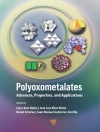The shift towards being as environmentally-friendly as possible has resulted in the need for this important volume on homogeneous catalysis. Edited by the father and pioneer of Green Chemistry, Professor Paul Anastas, and by the renowned chemist, Professor Robert Crabtree, this volume covers many different aspects, from industrial applications to atom economy. It explains the fundamentals and makes use of everyday examples to elucidate this vitally important field.
An essential collection for anyone wishing to gain an understanding of the world of green chemistry, as well as for chemists, environmental agencies and chemical engineers.
Daftar Isi
ATOM ECONOMY – PRINCIPLES AND SOME EXAMPLES
Introduction
Principle of Atom Economy
Atom Economical by Design: Examples of Reactions Relying on C-H Activation
Conclusion
CATALYSIS INVOLVING FLUOROUS PHASES: FUNDAMENTALS AND DIRECTIONS FOR GREENER METHODOLOGIES
Introduction
Directions for Greener Fluorous Methodologies
Solvents for Fluorous Chemistry
Ponytails and Partition Coefficients
Specific Examples of Catalyst Recovery that Exploit Temperature-dependent Solubilities
Specific Examples of Catalyst Recovery that Exploit Fluorous Solid Phases
Summary and Perspective
CHEMISTRY AND APPLICATIONS OF IRON-TAML CATALYSTS IN GREEN OXIDATION PROCESSES BASED ON HYDROGEN PEROXIDE
Introduction
Properties of Fe-TAMLs and Mechanisms of Oxidation with Hydrogen Peroxide
Applications of Fe-TAMLs
Conclusion
MICROWAVE-ACCELERATED HOMOGENEOUS CATALYSIS IN WATER
Introduction
Suzuki-Miyaura Reactions
The Stille Reaction
The Hiyama Cross-Coupling Reaction
The Heck Reaction
Carbonylation Reactions
The Sonogashira Reaction
Aryl-Nitrogen Couplings
Aryl-Oxygen Couplings
Miscellaneous Transformations
Conclusion
IONIC LIQUIDS AND CATALYSIS: THE IFP BIPHASIC DIFASOL PROCESS
Introduction
The Solvent in Catalytic Reactions
The Catalytic Oligomerization of Olefins
The Biphasic Difasol Process
Conclusion
IMMOBILIZATION AND COMPARTMENTALIZATION OF HOMOGENEOUS CATALYSTS
Introduction
Soluble Dendrimer-bound Homogeneous Catalysts
Polymer-bound Homogeneous Catalysts
Conclusion and Outlook
INDUSTRIAL APPLICATIONS OF HOMOGENEOUS ENANTIOSELECTIVE CATALYSTS
Introduction and Scope
Critical Factors for the Technical Application of Homogeneous Enantioselective Catalysts
Industrial Processes: General Comments
Hydrogenation of C=C Bonds
Hydrogenation of C=O Bonds
Hydrogenation of C=N Bonds
Oxidation Processes
Miscellaneous Transformations (Isomerization, Addition Reactions to C=C, C=O and C=N Bonds, Opening of Oxacycles)
Conclusions and Future Developments
HYDROGENATION FOR C-C BOND FORMATION
By-product-free C-C Coupling and the Departure from Preformed Organometallic Reagents
Hydrogenative Vinylation of Carbonyl Compounds and Imines
Hydrogenative Allylation of Carbonyl Compounds
Hydrogenative Aldol and Mannich Additions
Hydrogenative Acyl Substitution (Reductive Hydroacylation)
Hydrogenative Carbocyclization
Future Directions
ORGANOCATALYSIS
Introduction
Catalysts
Reactions
Conclusion
PALLADACYCLES IN CATALYSIS
Introduction
Catalyst Precursors for C-C and C-X (Heteroatom) Coupling Reactions
Other Catalytic Reactions Catalyzed by Palladacycles
Conclusion
HOMOGENEOUS CATALYST DESIGN FOR THE SYNTHESIS OF ALIPHATIC POLYCARBONATES AND POLYESTERS
Introduction
Synthesis of Aliphatic Polycarbonates from Epoxides and Carbon Dioxide
Synthesis of Aliphatic Polyesters
THE AEROBIC OXIDATION OF p-XYLENE TO TEREPHTHALIC ACID: A CLASSIC CASE OF GREEN CHEMISTRY IN ACTION
Introduction
Methods of Making Terephthalic Acid Using Stoichiometric Reagents
Methods for Preparing Terephthalic Acid Using Cobalt Acetate and Dioxygen in Acetic Acid
Adding Bromide to Improve Terephthalic Acid Production Using Cobalt and Manganese Acetates in Acetic Acid
Potential Processes Using Water as a Solvent
Summary and Final Comments
Tentang Penulis
Series Editor
Paul T. Anastas joined Yale University as Professor and serves as the Director of the Center for Green Chemistry and Green Engineering at Yale. From 2004-2006, Paul Anastas has been the Director of the Green Chemistry Institute in Washington, D.C. Until June of 2004 he served as Assistant Director for Environment at e White House Office of Science and Technology Policy where his responsibilities included a wide range of environmental science issues including furthering international public-private cooperation in areas of Science for Sustainability such as Green Chemistry. In 1991, he established the industry-government-university partnership Green Chemistry Program, which was expanded to include basic research, and the Presidential Green Chemistry Challenge Awards. He has published and edited several books in the field of Green Chemistry and is one of the inventors of the 12 principles of Green Chemistry.
Volume Editor
Bob Crabtree took his first degree at Oxford, did his Ph.D. at Sussex and spent four years in Paris at the CNRS. He has been at Yale since 1977. He has chaired the Inorganic Division at ACS, and won the ACS and RSC organometallic chemistry prizes. He is the author of an organometallic textbook, and editor-in-chief of the Encyclopedia of Inorganic Chemistry and Comprehensive Organometallic Chemistry. He has contributed to C-H activation, H2 complexes, dihydrogen bonding, and his homogeneous tritiation and hydrogenation catalyst is in wide use. More recently, he has combined molecular recognition with CH hydroxylation to obtain high selectivity with a biomimetic strategy.












